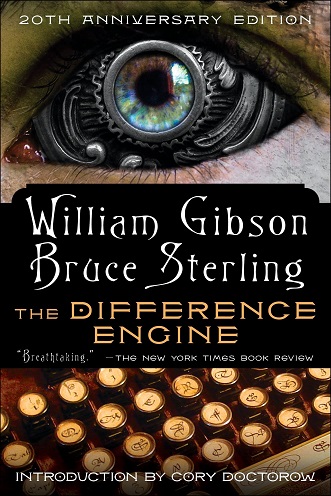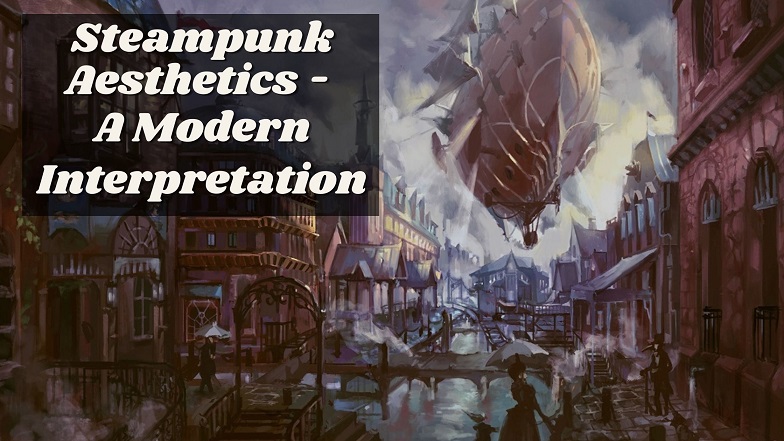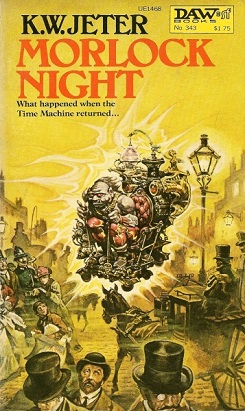Steampunk culture has always had multiple definitions. We like to think of it as a reinvention of the outlook people might have had, in the 19th century, about the future. Even though the term ‘steampunk’ started as a subgenre of science fiction inspired by novels in the mid-1980s, the earliest inspiration for steampunk came from authors like Jules Verne, H. G. Wells, Sir Arthur Conan Doyle, and many more. Nowadays, instead of just being a genre steampunk has made its way into art, fashion, and other subcultures which have their own unique steampunk aesthetics.
Contents
Steampunk genre and its many explanations
There are still several debates about the genre in which steampunk belongs. Some explain it as a literary genre of science fiction, some call it fantasy, some refer to it as alternate history. They are not wrong but they are also not right. Of course, for the sake of publications, it is important to provide a genre to a book as there are not many that allow you to publish under a ‘steampunk’ genre. But more often than not these genres can be deceiving. Earlier publications for steampunk were usually labeled under the science fiction genre. However, there was more fantasy than science in these works.
Interstellar by Christopher Nolan explores the idea of interstellar space travel and time travel by humans and is classified as a brilliant work of science fiction. This story adopts key elements of physics that we know exist in our universe and explores some theories that have been theoretically proved or proposed by well-known scientists. Now, take the example of ‘Anubis Gates’ by Tim Powers. In this story, people travel through time using elements like magical gates and the antagonists are magicians. Another example is that of ‘Morlock Nights’ by K. W. Jeter. In his novel, he explores the idea of future beings(Morlocks) invading 19th century England, if they were successful in capturing the ‘Time Traveler’ protagonist from H. G. Wells’ novel ‘The Time Machine’. Again this novel uses more elements of fantasy than science fiction by using mythical stories like, The Legend of King Arthur and such, to drive its plot.
The Difference Engine by William Gibson is probably one of the closest novels that can be classified as science fiction. It explores the idea of a world where Charles Babbage was able to build his Difference Engine and go on to complete the Analytical Engine. But the problem with calling this science fiction is that, even though we do know there is a working model of a Difference Engine, it was never mass-produced or used by anyone. Therefore this work falls more under the category of speculative alternate history.

All of these works are brilliant in their own right and are some of the earliest inspiration for steampunk enthusiasts. However, to understand what steampunk really is we need to break down what these works are composed of and how they inspired an entire culture of steampunk-related art, fashion, decor, cosplay, convention, etc.
What is steampunk aesthetic?
It is not really that easy to classify steampunk into a genre of fiction or fantasy, based on its earliest inspirations. People often confuse steampunk with everything powered by steam as is usually with the case with cyberpunk, where everything is powered by machines and cyberspace. It would be easier to understand what made these works steampunk by understanding what K. W. Jeter meant when he first coined this term. For him, most likely, steampunk wasn’t about massive steam-powered mechanical machinery but he was rather referring to the age and the characteristics of the age when everything was powered by steam. Since the 19th century was the era of steam, it was the characteristics of this age that inspired his steampunk works and the works of many other authors.
Even in the novels mentioned before, the 19th-century setting is the factor that binds all these works into steampunk. The visual characteristics of this era gave rise to the culture that we see and know today. These visual characteristics are also called steampunk aesthetics. Steampunk aesthetics usually include designs that are inspired by the architecture, industrial machinery, and fashion of the 19th century. It is a combination of vintage 19th-century looks, retrofuturistic technology and ideals, and fantastical technology.

The 19th-century look refers to the architecture and fashion of the people of this era, mostly referred to as the Neo-Victorian era. However, we know that steampunk has grown way beyond Victoriana England into several American and Japanese settings as well. Boneshaker by Cherie Priest is a novel that takes place in an alternative America where the Civil War still continues in the 1880s. Retrofuturistic technology refers to imagining future technologies(present-day tech) as they would be envisioned by people in the 19th century. Retrofuturistic ideals refer to reforming social etiquettes of the past in an image of the modern age. And of course, fantastical technology refers to a technology that cannot be explained or contradicts the laws of nature in order to operate.
Steampunk as a genre has evolved into various cultures of art, fashion, decor, furniture, and much more. Let us explore some of the commonly seen steampunk aesthetics in the various subcultures mentioned.
Steampunk Aesthetics in Arts
Steampunk aesthetics in arts often include visual characteristics such as visible gears and clockwork which were well used during the 19th century. Pipes, valves, and other industrial machinery are also commonly seen in steampunk artwork. People who draw steampunk characters often take inspiration from 19th-century fashion to base their characters on. Another common motif is steam-powered airships. These balloons can range from common hot-air balloons to complex airships. Modern artists have also started using sea life and animal, such as octopuses, owls, etc. as inspiration to create their own mechanical versions of said animals.
Steampunk Aesthetics in Fashion
Steampunk aesthetics in fashion includes clothes inspired by the 19th century. Suits, waistcoats, pantaloons, blouses, bustle skirts, and corsets are common apparels associated with this genre. People usually like to accessorize these with top hats, goggles, walking sticks, pocket watches, etc. Modern accessories also include weapons, ocular loupes, telescopes, jewelry made up of gears and clockwork, and much more. Most of the clothes are made using lace, leather, and brass. The fashion also draws inspiration from other 19th-century settings such American Wild West. Leather pants, gun holsters, shirts, and long jackets are some common elements in this setting.
Steampunk Aesthetics in Decor
Steampunk aesthetics in decor is quite brilliant and unique. It includes some of the widest range of artifacts that can be seen in the steampunk community today. Ranging from trinket boxes to wall clocks, puzzle boxes to DIY projects, furniture to bookshelves, steampunk has found its way into all of it. Most of these amazing objects are handmade and incorporate unique designs. Again, as with steampunk art, gears, pipes, valves, and other forms of 19th-century industrial machinery provide the steampunk aesthetic to most of these projects. Many artists also create unique objects which incorporate the retrofuturistic aspect of steampunk aesthetics. For example, a mechanical keyboard where its keycaps are replaced with typewriter keys. Or a night lamp designed using metal pipes and fitted with touch control dimming options.


